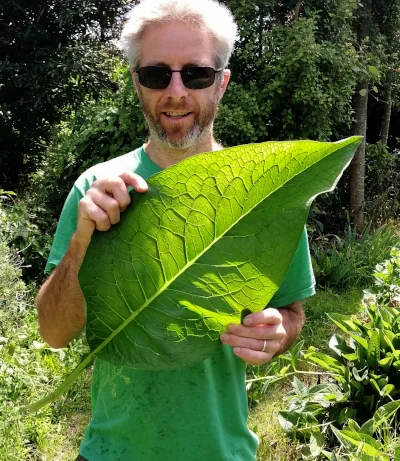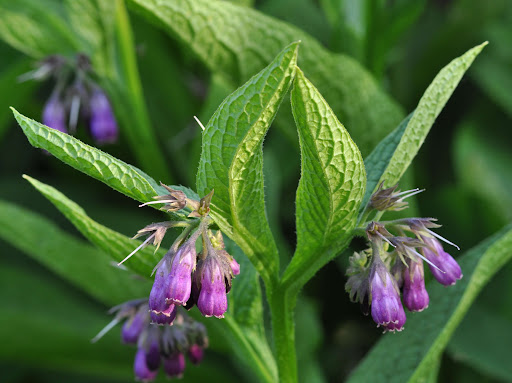Comfrey root pieces for growing




Comfrey (Symphytum officinale) is a hardy perennial herb with large, deep green, hairy leaves and bell-shaped flowers that range in colour from purple to white. It thrives in most temperate climates and is known for its deep taproot, which allows it to access nutrients from deep within the soil. Comfrey is widely valued for its medicinal uses, permaculture benefits, and as a companion plant in gardens.
Nutrient Accumulator: Comfrey has a deep taproot that mines nutrients from the subsoil. It is particularly rich in potassium, calcium, and nitrogen, which are essential nutrients for plant growth. These nutrients can be returned to the surface by chopping the leaves and using them as mulch or in compost.
Excellent Mulch Material: Comfrey leaves decompose quickly, releasing nutrients into the soil, making it a great source of "green manure." It enriches the soil when used as mulch around plants.
Compost Activator: Adding comfrey to compost piles speeds up decomposition due to its high nitrogen content. It can help balance carbon-rich materials like straw and wood chips.
Herbal Medicine: Traditionally, comfrey has been used in herbal medicine to heal wounds, reduce inflammation, and treat bone fractures, hence its nickname "bone-knit." However, internal use of comfrey is discouraged due to its pyrrolizidine alkaloid content, which can be toxic to the liver if ingested.
Biodiversity Support: Comfrey’s flowers attract pollinators like bees, which enhances pollination in your garden. It also provides habitat for beneficial insects.
Livestock Fodder: Comfrey leaves are nutrient-dense and can be used as fodder for livestock, particularly chickens, goats, and pigs. The leaves are rich in protein and vitamins, making it a useful supplement in animal diets.
Erosion Control: Comfrey’s extensive root system helps stabilize soil, making it a great choice for planting on slopes or in areas prone to erosion.
Weed Suppression: Once established, comfrey's large, broad leaves create a dense canopy that can help suppress weeds by shading the soil.
Liquid Fertilizer: Comfrey can be used to make a nutrient-rich "comfrey tea" by soaking the leaves in water for several weeks. The resulting liquid can be used as a high-potassium fertilizer for plants, especially fruiting crops like tomatoes and peppers.
Prepare the Site
Plant the Root Pieces
Backfill and Water
Wait for Growth
Prepare the Site
Plant the Crowns
Water and Care